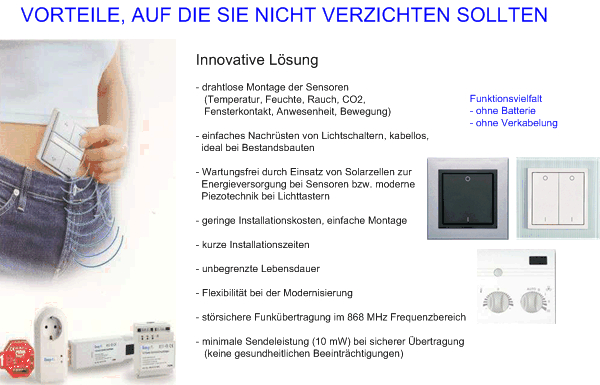





EnOcean transmitter modules extract the tiny amounts of energy they need from their environment. Small variations in temperature, slight vibrations, changes in pressure, movement, weak light sources – all of these produce energy which can be utilised to transmit a signal. The technological breakthrough achieved by EnOcean has made it possible to reduce the amount of energy required for the signal transmission to an incredibly small level. This ability to transform energy types means that sensors made by EnOcean even work in places where other technologies fail (for example in areas of weak lighting, in building interiors for instance).
The most commonly used transmitter modules at present are supplied with electricity from piezo crystals, solar cells or electrodynamic energy. By using its patented technology, EnOcean is capable of creating a high-range signal using low levels of ambient energy. A level of 50 µWs is sufficient for an EnOcean radio module to transmit a signal over a distance of 300m. The secret lies in the duration of the transmission – the entire process is triggered, performed and completed in only a millionth of a second.
EnOcean radio modules operate in their standard configuration on the licence-free 868.3 MHz band. This frequency band has proven to be ideal for such purposes in many areas of the world. In Europe, it has been approved exclusively for short-duration data transmissions. Moreover, as the average signal strength is low, the selected frequency band conforms with the requirements of the American and Canadian markets.